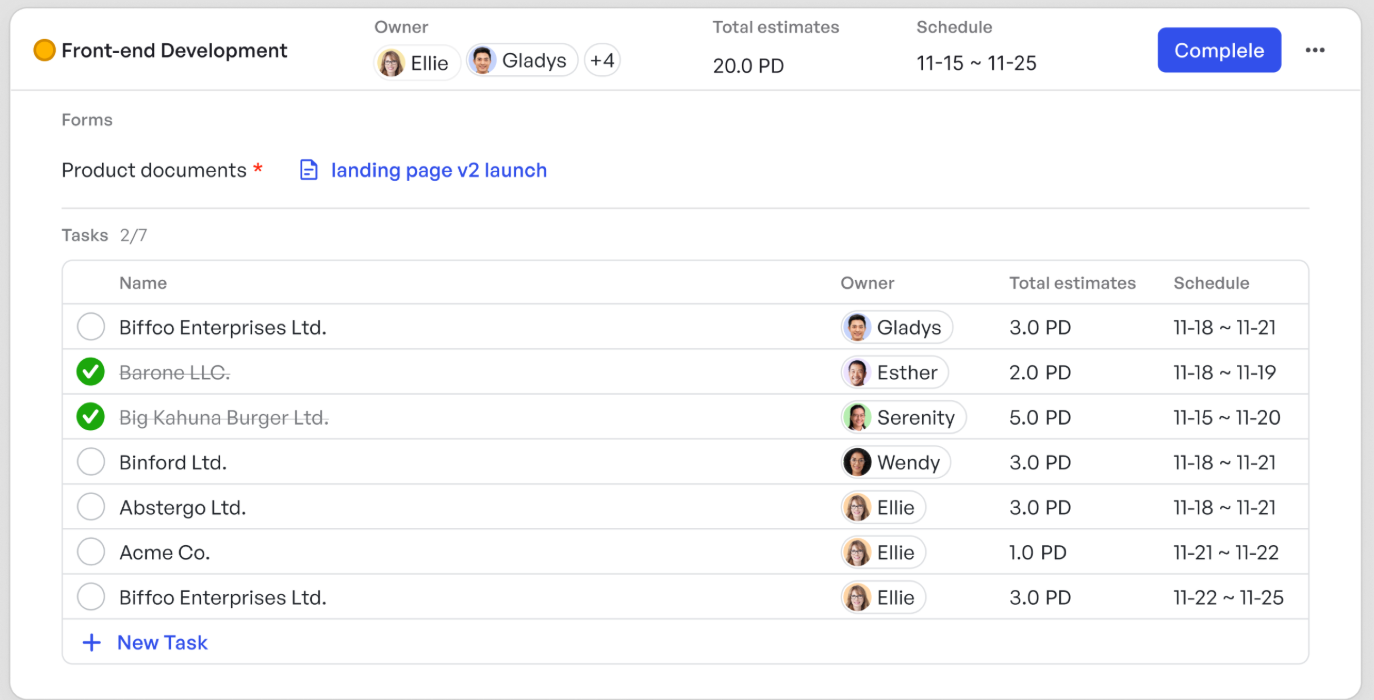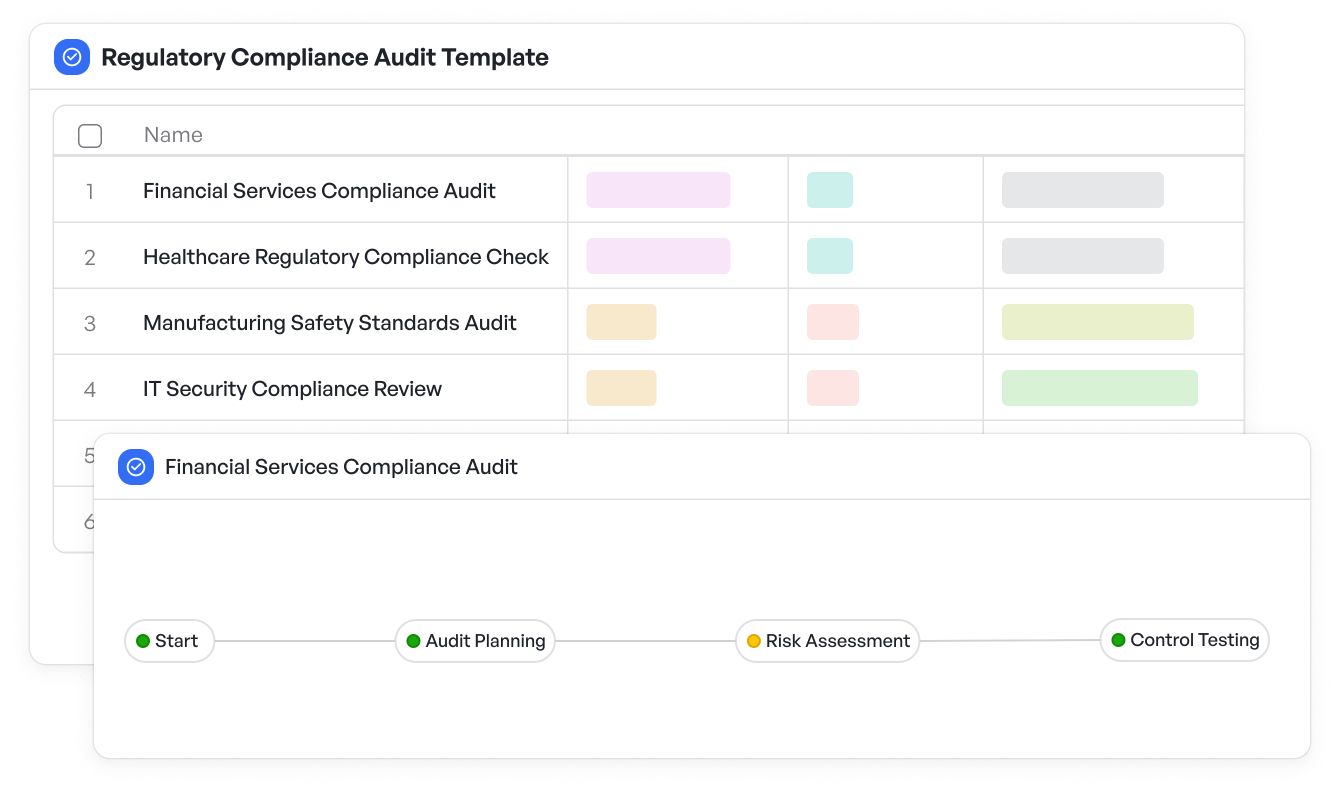How to Implement Feature-Driven Development in Finance: Enhancing Project Delivery and Agility

Finance software projects face constant pressure to keep up with evolving regulations, customer expectations, and technological advancements.
Feature-driven development (FDD) is an Agile methodology that enables teams to deliver practical, working features frequently, allowing finance organizations to meet tight deadlines and adapt to changing needs.
This article examines how feature-driven development applies to finance projects, the benefits it offers, and how visualized workflows play a crucial role in efficiently managing complex processes.
What is Feature-Driven Development in Finance?
Feature-driven development is a structured Agile approach that breaks down projects into small, client-valued features.
Each feature represents a piece of functionality that delivers real business value, such as "process loan application," "generate financial report," or "validate transaction compliance."
For finance teams, FDD provides a means to deliver incremental progress with clear visibility and frequent validation, thereby reducing the risks associated with projects related to regulatory compliance, risk management, or customer-facing financial platforms.
Key Benefits of Feature-Driven Development for Finance Teams
Finance teams face unique challenges such as tight deadlines, regulatory pressures, and complex workflows. Feature-driven development addresses these demands by delivering clear advantages that improve project outcomes:
- Focused delivery: Teams concentrate on features that directly impact business value, allowing faster responses to changing financial regulations or market demands.
- Improved transparency: Breaking down work into features provides clear milestones that stakeholders can track easily.
- Risk mitigation: Regular feature releases enable early detection and resolution of issues, particularly critical in finance systems subject to high regulatory scrutiny.
- Team collaboration: Small, well-defined features help different teams work in parallel without confusion over scope or responsibilities.
To support these advantages in practice, finance teams utilize templates such as Fintech Project Lifecycle Management, which is designed to streamline project tracking, enhance milestone visibility, and facilitate cross-team collaboration within finance workflows.
 Finance teams stay organized and aligned throughout every phase of development
Finance teams stay organized and aligned throughout every phase of developmentHow Feature-Driven Development Works in Finance Projects
FDD structures development around five core activities that finance teams can adopt to improve project clarity and speed:
1. Develop an Overall Model
Finance teams begin by collaboratively identifying the domain model, involving stakeholders from compliance, risk, operations, and development. This early alignment ensures everyone shares a clear understanding of critical financial processes such as transaction flows, reporting structures, and regulatory checkpoints.
Strong collaboration at this stage helps guide decisions downstream and reduces costly rework.
2. Build a Features List
The finance system is broken down into small, client-valued features such as “process loan application,” “generate regulatory report,” or “validate customer identity.”
Each feature must be meaningful, independent, and traceable.
A dedicated feature management workflow enables finance teams to structure these features, prioritize them based on regulatory urgency or business impact, and link them to key milestones using task tracking and version control.
 Visualizing and managing features within a finance-specific workflow enhances clarity and prioritization
Visualizing and managing features within a finance-specific workflow enhances clarity and prioritization3. Plan by Feature
Every feature is assigned an owner, timeline, and dependencies. This granular planning is critical in finance projects where compliance deadlines and audit requirements add complexity.
Breaking work into smaller, manageable parts improves estimation accuracy and alignment across teams, allowing better forecasting of release dates while maintaining modularity.
 Detailed task monitoring and progress tracking improve predictability in finance development cycles
Detailed task monitoring and progress tracking improve predictability in finance development cycles4. Design by Feature
Small feature teams focus on designing implementation plans that consider edge cases common in finance, such as exception handling in transactions or audit trails.
Early design reviews reduce friction during build and establish a high-quality standard aligned with financial regulations.
5. Build by Feature
Once designs are approved, features are developed, unit tested, and integrated into the broader system. Consistent quality is essential, especially given the sensitive nature of financial data.
Visualized Workflow: The Backbone of Managing Feature-Driven Development in Finance
Managing feature-driven development in finance requires clear visibility into workflows, dependencies, and progress.
Visualized workflows make this possible by mapping each feature within the larger process, showing the status, responsible parties, and deadlines at a glance.
Visual workflows benefit finance teams by:
- Clarifying how features relate to overall business processes like compliance checks, reporting, or transaction approvals.
- Helping teams identify bottlenecks early, such as delayed approvals or testing phases
- Supporting cross-team collaboration by making handoffs and responsibilities transparent
- Allowing finance leaders and operations directors to track progress without getting lost in technical details.
Visual workflows, such as the RegTech Compliance Monitoring template, offer finance teams a practical way to keep regulatory tasks organized and transparent, making it easier to manage compliance within complex projects.
 RegTech template helps deliver compliance features clearly and efficiently within feature-driven development
RegTech template helps deliver compliance features clearly and efficiently within feature-driven developmentAdopting Feature-Driven Development: Practical Steps for Finance Leaders
Finance decision-makers looking to adopt FDD should consider the five key steps to align the methodology with organizational needs:
- Engage stakeholders early: Collaborate with compliance, risk, and business teams to identify critical features.
- Prioritize features by business impact: Focus development efforts on features that drive financial value or regulatory compliance.
- Use visual workflow tools: Employ tools that allow easy visualization and customization of feature workflows to reflect real finance processes.
- Establish frequent reviews: Schedule regular check-ins to review completed features and gather feedback.
- Train teams on agile and FDD principles: Ensure all participants understand the benefits and processes for smooth adoption.
 Visualizing compliance features with a regulatory compliance template
Visualizing compliance features with a regulatory compliance templateFeature-Driven Development vs Other Agile Approaches in Finance
While Agile methodologies such as Scrum or Kanban are widely used in finance, FDD offers distinct advantages for complex, compliance-heavy projects.
Unlike broad frameworks, FDD’s feature-centric model ensures the team is always focused on delivering discrete, measurable value. This reduces ambiguity and improves predictability, which are crucial in financial environments.
To better understand how feature-driven development stands apart from other Agile methods in finance, consider the following comparison:
| Aspect | Feature-Driven Development (FDD) | Scrum | Kanban |
|---|---|---|---|
| Focus | Delivery of small, client-valued features | Timeboxed sprints delivering increments | Continuous flow of tasks |
| Best for | Complex, compliance-heavy finance projects | Cross-functional teams needing regular feedback | Teams needing flexible task prioritization |
| Planning approach | Feature list with detailed design before build | Sprint planning with backlog grooming | Visual task board with pull-based workflow |
| Transparency | Clear progress via completed features | Sprint reviews and daily stand-ups | Visual board showing work-in-progress |
| Risk management | Early issue detection through feature iterations | Regular retrospectives to address blockers | Continuous monitoring of bottlenecks |
| Documentation | Emphasizes upfront domain modeling and design | Minimal; focus on working software | Minimal; focuses on task flow |
| Regulatory compliance fit | Strong, with features aligned to compliance tasks | Moderate; relies on team discipline | Varies; flexible but less structured |
| Predictability | High, due to feature-based milestones | Moderate; depends on sprint success | Low to moderate; flow-based with no fixed deadlines |
For finance teams managing complex, compliance-focused projects, feature-driven development offers greater predictability and structure compared to other Agile methods.
Deliver Value with Confidence Using Feature-Driven Development
Feature-driven development supports financial organizations in delivering software projects that meet rapidly changing regulatory demands and market expectations. By focusing on incremental feature delivery and leveraging visualized workflows, finance teams can enhance transparency, collaboration, and control.
Adopting this Agile approach can lead to faster project completion, reduced risk, and more aligned business outcomes, supporting the organization's broader goals for compliance and customer satisfaction.
Try Meegle to streamline feature development and bring clarity to your finance team’s workflow.
The world’s #1 visualized project management tool
Powered by the next gen visual workflow engineRead More
Check All BlogsStart creating impactful work today



